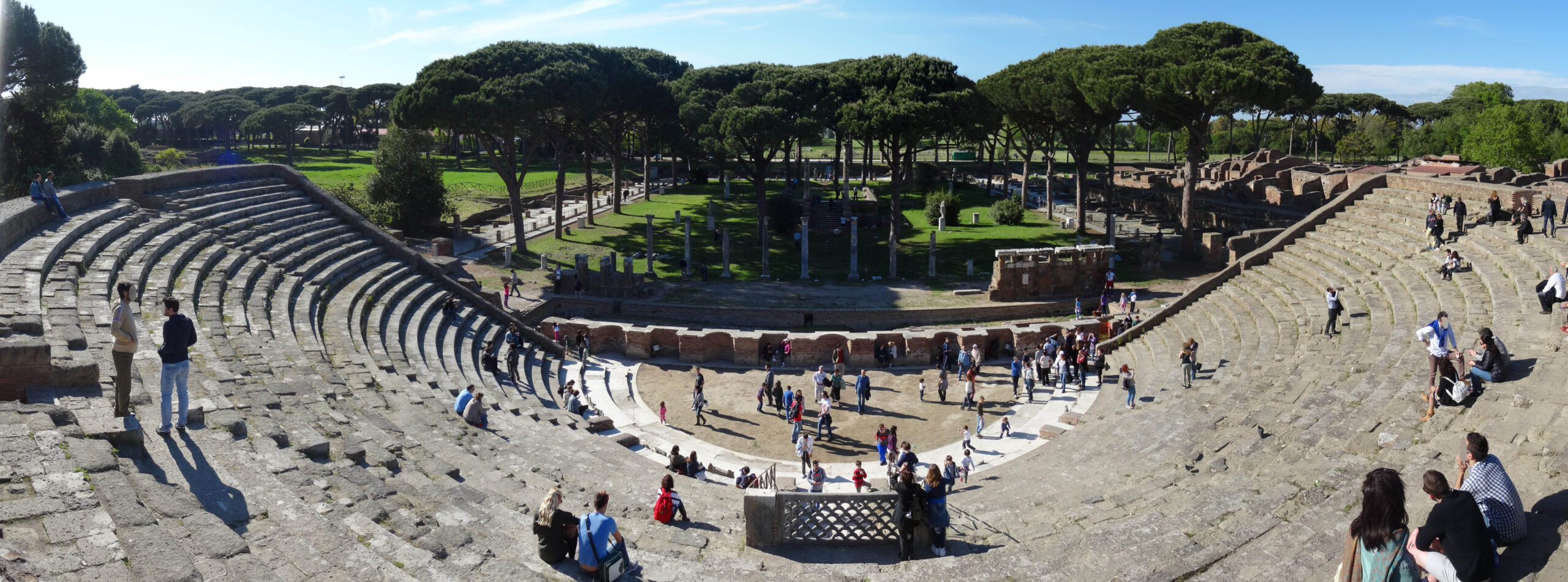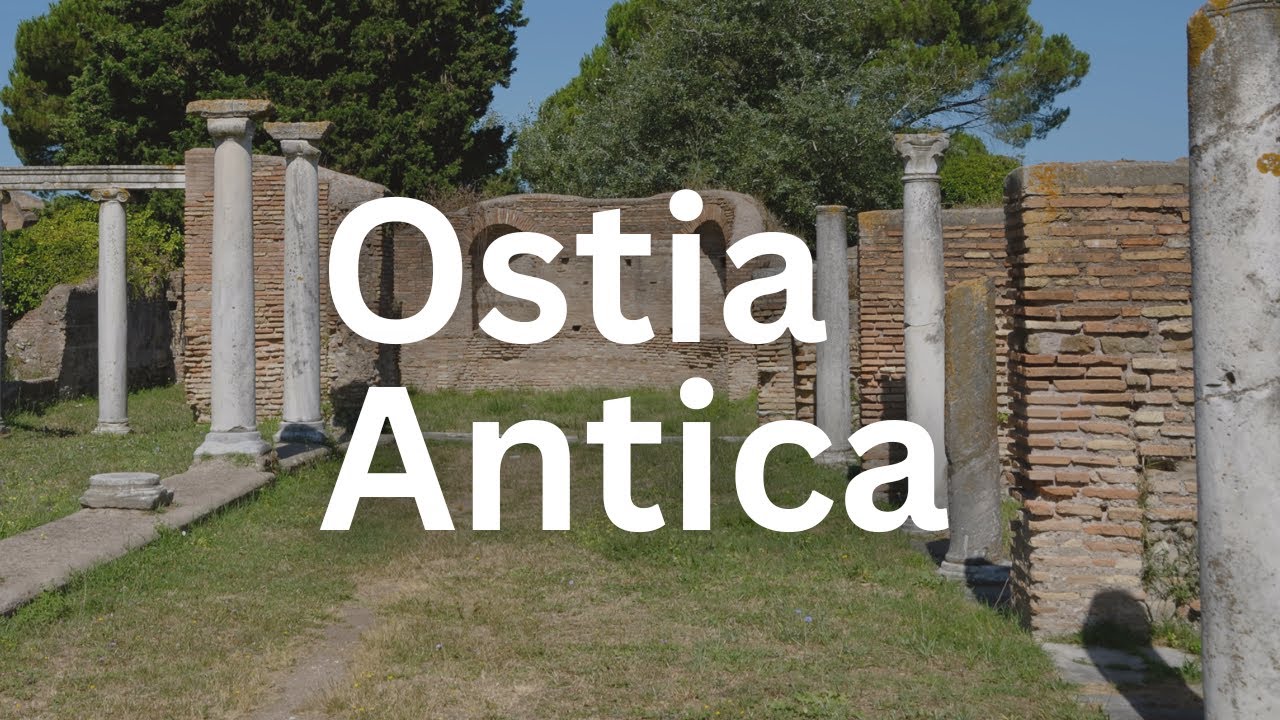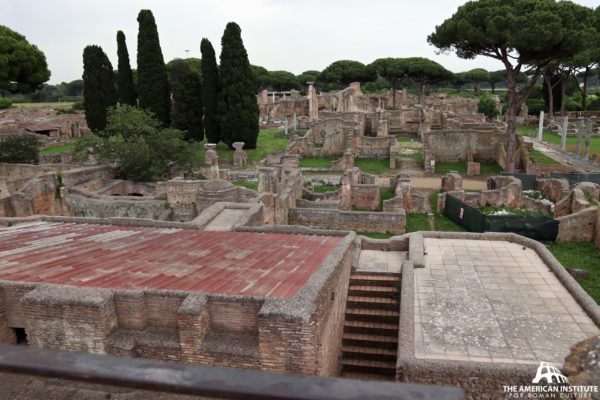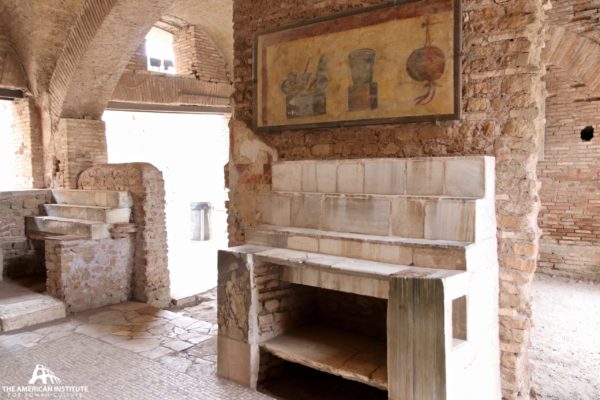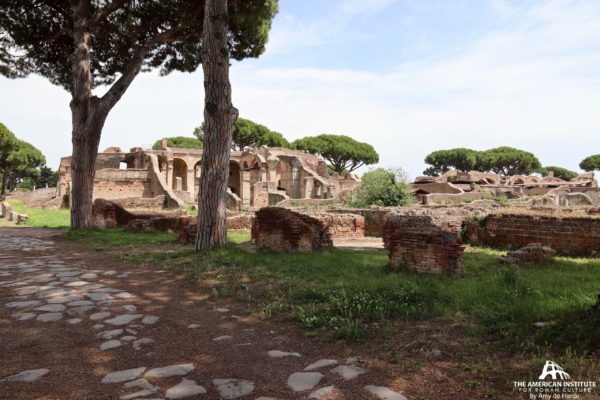Watch our video overview:
The city center of Rome showcases magnificent ancient monuments like the Colosseo, the Pantheon, and the Roman Forum. However, the urban fabric of the city has been destroyed and rebuilt numerous times throughout the centuries. Therefore, it is not possible to visualize the details of daily life in antiquity. Ostia Antica provides us with an uninterrupted experience of Ancient Rome at its height.
Ostia Antica was built in a strategic spot. At the mouth of the Tiber River, it was originally a military fortification to control and protect Rome’s access to the Tyrrhenian Sea and consequently, the Mediterranean. Later, it became a Port, receiving different products that were vital to life in Rome. Olive oil, wine, grains, and precious materials from all around the empire arrived first in Ostia through the sea trade. These items were processed, cataloged, stored, and finally supplied to the heart of Rome through smaller boats that ran up the course of the Tiber until they reached the city center.
Ostia was a direct lifeline to Rome. The well-being and success of Rome can be measured by the well-being and success of Ostia. After being replaced by Trajan’s Harbors as a commercial center in the first century BCE, Ostia’s life and population slowly declined. Eventually, the city was covered in sand dunes and abandoned. The city was never rebuilt or repopulated like Rome was multiple times.
What seems like a sad ending to a city that was once vibrant and essential, is actually incredible in terms of preservation. Nowadays, Ostia Antica is an archeological oasis. Every component of the ancient city can be identified and studied: temples, warehouses, laundry places, bakeries, public theaters, and bathhouses. They give us an in-depth perspective of the activities and organization of everyday life of the ancient Romans.
One interesting element to analyze, and understand how Ostia Antica was fundamental, are the bakeries. There were two of them in the city. The stone mills and kneading troughs have been preserved. They were used to process the grains that arrived at the Port, break them down into flour, and incorporate it with water to make bread. The produce was then stored in the warehouse built right next to the bakery. Bread was a primary element in the diet of Ancient Rome.
References
- COARELLI, FILIPPO, JAMES J. CLAUSS, DANIEL P. HARMON, J ANTHONY CLAUSS, and PIERRE A. MACKAY. Rome and Environs: An Archaeological Guide. 1st ed. University of California Press, 2014. – http://www.jstor.org/stable/10.1525/j.ctt5vk043.
- https://www.britannica.com/place/Ostia
- https://www.turismoroma.it/it/luoghi/parco-archeologico-di-ostia-antica-0
Explore further:
This content is brought to you by The American Institute for Roman Culture, a 501(C)3 US Non-Profit Organization.
Please support our mission to aid learning and understanding of ancient Rome through free-to-access content by donating today.
Cite This Page
Cite this page as: Darius Arya, The American Institute for Roman Culture, “Ostia, Italy (Ostia Antica) – Chapter 2: The Significance of the Site/Rome’s Reflection” Ancient Rome Live. Last modified 08/28/2020. https://ancientromelive.org/ostia-italy-ostia-antica-chapter-2-the-significance-of-the-site-romes-reflection/
License
Created by The American Institute of Roman Culture, published on 08/28/2020 under the following license: Creative Commons: Attribution-NonCommercial-ShareAlike. This license lets others remix, tweak, and build upon this content non-commercially, as long as they credit the author and license their new creations under the identical terms. Please note that content linked from this page may have different licensing terms.

